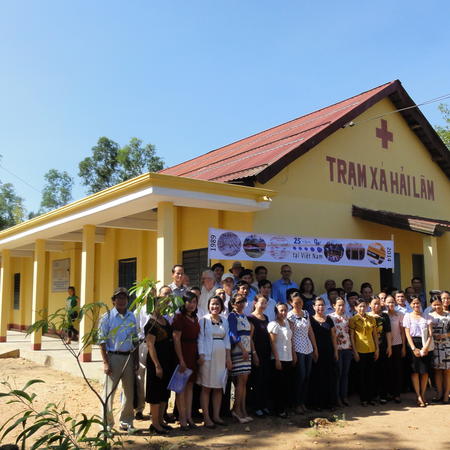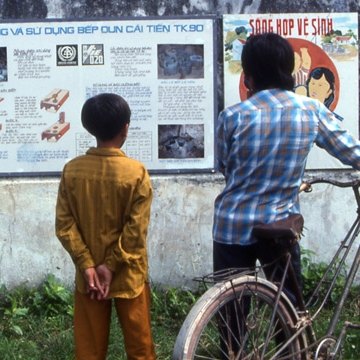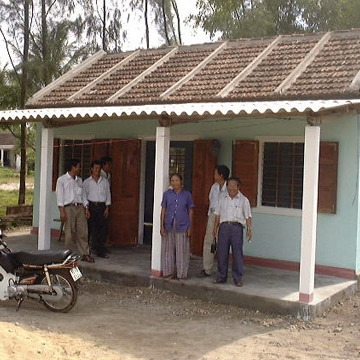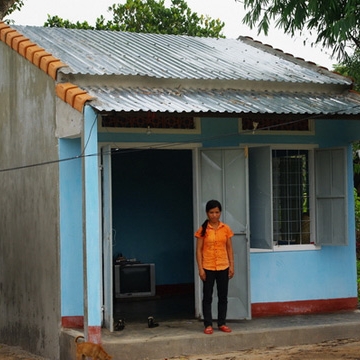GLOBAL: Asia most at risk from natural disasters, Viet Nam at “high risk”
NAIROBI, 31 May 2010 (IRIN) - Bangladesh, Indonesia, Iran and Pakistan top a new ranking of countries at “extreme risk” of experiencing natural disasters compiled by a global risk assessment company.
The Natural Disaster Risk Index (NDRI), released on 27 May by Maplecroft, ranks 229 countries according to the human impact of natural disasters in terms of deaths per annum and per million of population, plus the frequency of events as well as the likelihood of earthquakes, volcanic eruptions, tsunamis, storms, flooding, droughts, landslides, extreme temperatures and epidemics. Asia accounts for most of the disaster-related deaths since 1980.
Ranking countries most vulnerable to natural disasters over the past 30 years could enable businesses and investors to identify risks to international assets while supporting humanitarian efforts to push governments into investing in disaster risk reduction initiatives.
African countries at extreme risk are Ethiopia, Sudan and Mozambique, with 95 percent of casualties due to drought. Since 1980 drought has caused 9,800 deaths in Ethiopia, 5,300 in Sudan (ranked fifth) and over 3,400 in Mozambique (ninth).
According to experts, unlike earthquakes and storms, drought damage is more difficult to detect, both in terms of human lives and economic loss because it is a slow onset disaster.
Whereas France and Italy, respectively ranked 17 and 18, are the most vulnerable countries in Europe because of the 40,000 people who died in heat waves in 2003 and 2006, the US, with more than 8,000 lives lost over 30 years, is highly susceptible to hurricanes and storms and ranked 37th.
Haiti and China are respectively at numbers eight and 12 among the countries at highest risk. The earthquake in Qinghai Province on 13 April 2010, of almost the same magnitude as the one that hit Haiti on 12 January, cost the lives of 2,187 people, against 230,000 who died in Haiti.
The countries least at risk are Andorra, Bahrain, Gibraltar, Liechtenstein, Malta, Monaco, Qatar, San Marino and the United Arab Emirates.
In line with the data produced by Maplecroft, a study by the UN Development Programme says that 85 percent of the people exposed to earthquakes, tropical cyclones, floods and droughts in the past 10 years live in countries having either medium or low human development.
Pedro Dabase, head of the UN International Strategy for Disaster Risk Reduction (ISDR) regional office for Africa, told IRIN: “In these types of rankings, the variables to look at are the time period of analysed data, types of hazards and vulnerabilities to natural disasters. This is because countries that face similar patterns of natural hazards often experience widely differing impacts when disasters occur, depending in large part on the kind of development choices they have made.
“If one looks at the frequency of earthquakes and cyclones in Haiti in the past 100 years, the situation of the country would not be considered as worrisome, unlike the past 10 years, with great human losses caused by flooding almost every year and hurricanes in 2004, 2005 and 2008.
“In terms of impacts for example, the recent earthquake in Chile, of the same magnitude as Haiti, recorded about 100,000 deaths but in terms of economic losses it registered US$22 billion, versus the $8 billion estimated for Haiti. Therefore, the vulnerability of Chile in terms of economic loss is higher than Haiti, which instead caused more losses in terms of human lives,” Dabase told IRIN.
Figures produced by the Centre for Research on the Epidemiology of Disasters (CRED) at the beginning of 2010 highlighted that in the past 10 years 3,852 disasters killed more than 780,000 people, affecting more than two billion and causing an economic loss of $960 billion.
According to ISDR, earthquakes, followed by storms (22 percent) and extreme temperatures (11 percent) are the deadliest natural hazards of the past 10 years and remain a serious threat to millions of people worldwide.
ISDR also ranked the Indian Ocean tsunami of 2004 as the most deadly disaster of the decade, with 226,408 deaths; followed by Cyclone Nargis in Myanmar in 2008, which killed 138,366 people, and the Sichuan earthquake in China in 2008, causing the deaths of 87,476 people.
“Due to climate change, extreme hydro-meteorological events are predicted to increase and given the impact on the countries not at risk of being directly affected by natural disaster, we advise the need for even the wealthiest countries to focus on disaster risk reduction,” said Maplecroft’s environmental analyst, Anna Moss.
See http://www.maplecroft.com/about/news/natural_disasters.html











